Science Daily News | 26 Jun 2023

Views (119)
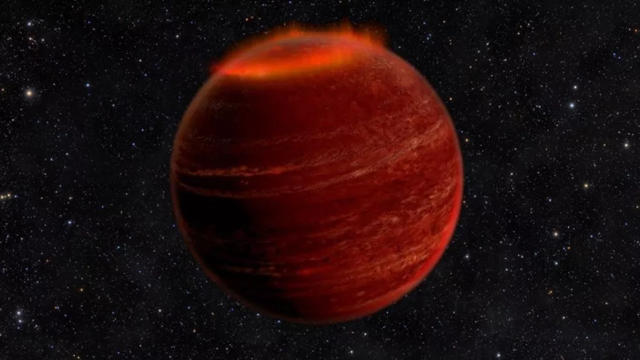
NASA's Jet Propulsion Laboratory and DARPA want to fix your PDFs. Here's how.
When NASA's Jet Propulsion Laboratory isn't piloting a rover on another world, it's apparently helping make PDF files more secure.
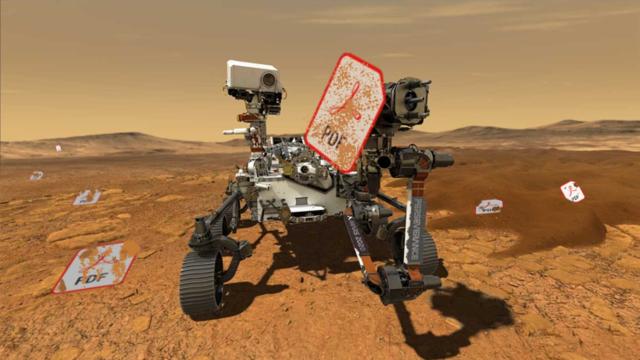
JPL, meet PDF.
PDF files are the most popular form of digital document in the world. And while they might look like scanned copies of paper documents, they are actually collections of text, images, movies and active scripts that aren't as secure as they should be given their ubiquity. To address this concern, JPL has partnered with the nonprofit PDF Association to develop the new archive of files that will help researchers analyze potential threats across a wide library of real PDFs.
RELATED STORIES:
Using the freely available Common Crawl public repository of web crawl information as a starting point, JPL researchers identified PDFs to add to the collection, including those that were incomplete due to Common Crawl's download limit of 1 megabyte per downloaded file. JPL then accessed those PDF URLs directly to download the full documents, ensuring a fully representative archive of the types of PDFs accessible on the web.
By making the collection available to the public, JPL hopes researchers will be able to use and analyze the PDFs to identify better ways of securing the information these documents contain.
NASA just recycled 98% of all astronaut pee and sweat on the ISS (engineers are thrilled)
ISS systems hit a water recovery milestone of 98% with the better processing of water contained in brine created when crewmates’ urine is distilled.
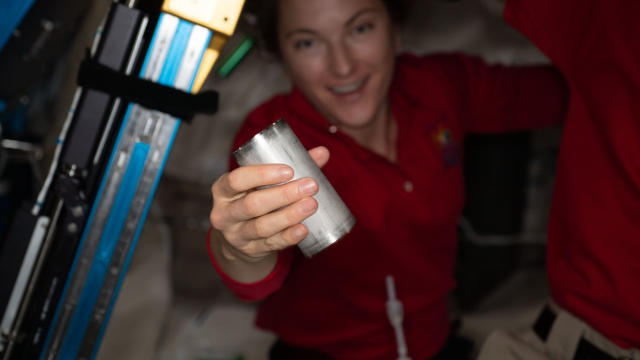
Astronauts aboard the International Space Station have achieved a 98% water recovery rate in a breakthrough achieved by a method that might make the faint of heart slightly squeamish: they hit peak astronaut pee recycling.
The ECLSS is made up of a combination of hardware, including a Water Recovery System that collects wastewater and advanced dehumidifiers that capture moisture from the air of the ISS as a result of the crew’s breath and sweat. This collected water is sent to the Water Processor Assembly (WPA), which then produces drinkable water.
The UPA element of the ECLSS distills urine, but brine is produced as a by-product of this process, and that still contains some unused water. A Brine Processor Assembly (BPA) was added to the UPA to extract this remaining wastewater. While demonstrating its operations in the microgravity of space, the BPA pushed the ECLSS to the 98% goal.
"Before the BPA, our total water recovery was between 93 and 94% overall," said ECLSS water subsystems manager Jill Williamson. "We have now demonstrated that we can reach [a] total water recovery of 98%, thanks to the brine processor."
The BPA takes brine created by the UPA and passes it through a series of special membranes introducing it to warn dry air that evaporates its water content. This results in humid air being created that is not dissimilar to the breath of ISS crew members, and this can be collected by ECLSS dehumidifiers.
Like the other collected wastewater, this is treated by the WPA with a series of specialized filters and a catalytic reactor that breaks down any trace contaminants that may remain. Sensors then check the purity of the water with water that doesn’t meet standards sent back for reprocessing. Iodine is added to acceptable water to prevent the growth of microbes, and the water is then stored for the crew to use at a later point.
Related Stories
"The processing is fundamentally similar to some terrestrial water distribution systems, just done in microgravity," Williamson pointed out. "The crew is not drinking urine; they are drinking water that has been reclaimed, filtered, and cleaned such that it is cleaner than what we drink here on Earth."
“We have a lot of processes in place and a lot of ground testing to provide confidence that we are producing clean, potable water," Williamson added.
The ECLSS systems are carefully tested to ensure that they are performing as intended and to demonstrate each element can function long-term without requiring a lot of maintenance or replacement spare parts.
The 98% milestone is a positive one for future space missions that will see astronauts spend more time in space during long stays on the lunar surface and crewed missions to Mars.
"The regenerative ECLSS systems become ever more important as we go beyond low Earth orbit. The inability to resupply during exploration means we need to be able to reclaim all the resources the crew needs on these missions," Williamson concluded. "The less water and oxygen we have to ship up, the more science that can be added to the launch vehicle. Reliable, robust regenerative systems mean the crew doesn’t have to worry about it and can focus on the true intent of their mission."
1 year on 'Mars:' NASA analog astronauts begin mock Red Planet mission today and you can watch it live
The next time the CHAPEA crew will see blue sky, a year will have passed on Earth. Not that the analog astronauts are leaving the planet, but for the next 12 months they will live in a mock Mars base.
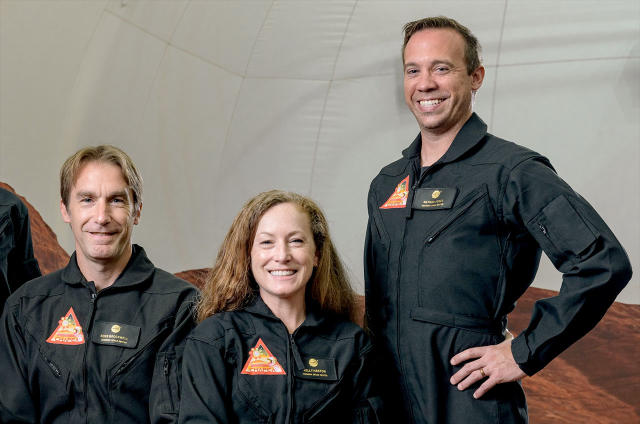
RELATED STORIES:
Otherwise, the CHAPEA crew will live for the next year as though they were really on Mars, taking part in the same kinds of activities that astronauts on the Red Planet would do. They will be instructed by Mission Control to perform science investigations, perform maintenance work on the habitat and maintain their fresh food crops. They may also encounter periodic, unexpected problems to see how they react. What those additional "stressors" might be, Bell is not saying. "If I told you that, it wouldn't be a surprise," she told collectSPACE. "A lot of our focus is simply with resource restrictions. So if people don't get to choose what's on their menu, how does that affect their health? Those are the types of things we're focused on for this series of missions. That will be a great baseline for us to then continue to explore all of these different possibilities of ours."
Watch a house-size asteroid zoom past Earth live today (June 25)
A small asteroid the size of a three-story building will pass between Earth and the moon on Sunday (June 25), and you can watch the encounter live thanks to a free telescope livestream.

Earth is about to have a close encounter with a space rock.
RELATED STORIES:
No tip facility for the east for three days as site moves home
The Eastern Civic Amenity Site is moving to a new site in Braddan which is due to open on Thursday.
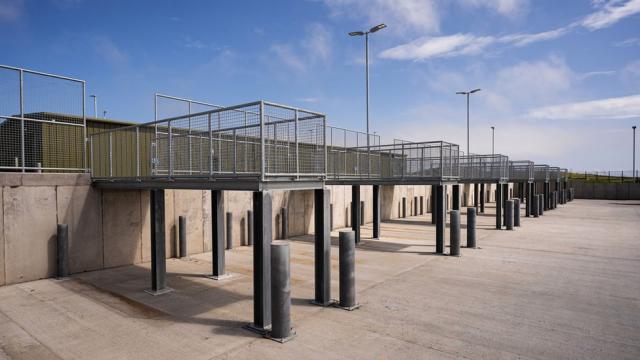
People in the east of the island will be without a tip and recycling centre for three days.
The Eastern Civic Amenity Site (ECAS) in Pulrose, Douglas, is set to close for the final time later.
It means there will be no services from 16:00 BST on Sunday until 08:00 on 29 June.
Operated by Douglas Council, the ECAS offers facilities for the capital, Onchan, Braddan, Santon and Garff.
Douglas Mayor Natalie Byron-Teare said the move had been "timed to coincide with a period which is generally quieter".
She said: "Although there will be no service in Douglas for three days, all other amenity sites around the Island will remain open and will accept waste from people who would normally use the ECAS.
"Those three days at the start of next week will allow the team to relocate and bed-in, ensure everything is in place and we can then look forward to opening the gates and welcoming the first members of the public on Thursday morning."
The new £3m development is set to feature a larger re-use shed, a higher number of recycling and waste skips and increased parking.
Civic amenity site facilities have been provided at the Middle River Trading Estate for more than two decades.
Bizarre object hotter than the sun is orbiting a distant star at breakneck speed
Scientists have discovered a weird celestial object that's blurring the line between planet and star.

A weird, super-hot celestial body is breaking records and challenging astronomers' understanding of the boundary between stars and planets.
RELATED STORIES
Because of this, the brown dwarf is only superheated on one side; even though its "day side" temperature reaches 13,900 F, its "night side" is a comparatively balmy 1,900 to 4,900 F (1,000 to 2,700 C). That's the most extreme temperature differential astronomers have measured on a substellar object, according to the researchers. But these conditions won't last long — as its molecules continue to fall apart, the brown dwarf is being evaporated by its host star.
Research on objects like WD0032-317B could help scientists understand how hot stars slowly consume their companions. It can also add to the growing body of knowledge around the conditions that stars need to ignite.
Originally published on LiveScience.com.
0 Likes
